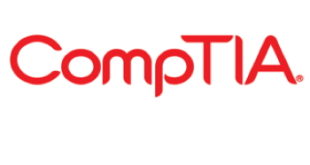Dominic Sacco asks CEO Todd Thibodeaux about the benefits of certifications for resellers and what’s next for the organisation…
What is new from CompTIA? How has the business grown over the past year?
We opened our membership in the latter half of 2014 and we’ve accumulated about 25,000 registered users. The companies that want to take advantage of the next tier of benefits have stayed on as premium members, so that’s something we can begin to use as a strategy to expand out into the rest of Europe and the Middle East this year. I think that’s something we’ll be focusing on in 2015.
We’ve launched our CertMaster training product – it’s training and test prep all in one, which has been on the market for a few months now, we’re getting some good pick up and activity around that.
We acquired Tech America and we’ve been working with the subsidiary of that – Tech America Europe – in Brussells. Having a base in the UK and Europe will allow us to get more of our message and programmes out into the rest of EMEA itself – the UK is our second largest market after the US.So those are probably the biggest three things we have done in the last few months of 2014.
Tell us about your latest training programmes for 2015…
For this year we’re looking at bringing out an online product called CyberSecure – a 60 to 90 minute training programme where anybody in an organisation can sit down and learn about the best practices for cyber behaviour within their company. For example, what happens if I click on a link and it’s got a virus? Who should I tell? What should I do? Is it safe to use Wi-Fi? Is it safe to put company files in Dropbox? What does a good password look like? There will be about 20 different cases that people will run through.
Another benefit is if you’re a premium CompTIA member you can make this available free to your own customers. Also, on the certification front, we have a new IT fundamentals exam coming out. This will be the first exam that won’t be delivered in a test centre – it will be available online without any proctor. It’s meant to reach as many people as possible to give them the basics of IT fundamentals.
It will be looking at what flash memory is, smartphones and how they work, laptops and how they are different, networking, as well as connectivity basics.
CompTIA’s Nancy Hammervik gave a very interesting talk at our PCR Woman of the Year event late last year. How is your own Advancing Women in IT initiative progressing?
It’s growing really well, it’s very active and we’re looking to broaden it out. It will probably double in size over the next 12 months. We’ve got very active LinkedIn groups, there’s also activity on Facebook, face-to-face meetings, phone calls as well as programmes.
Some of it is mentorship, some of it is best practices, some of it is bringing in speakers who have looked at the issue, talked about it and written books about it. Our members have also done research – they’ve been involved in our advocacy and lobbying efforts, so it’s a big block of very highly engaged ladies that are continuing to drive it.
There’s a product called Dream IT which encourages any of the women in the community to take a nice Powerpoint deck and some talking points, and go into a school to talk to girls.
We also support other programmes for children – we hope they bring in more kids who don’t yet know they’re interested in tech.
What would you say to resellers who don’t have any CompTIA training?
I think the thing is, as a reseller you don’t know what you don’t know. For example, many companies start our Trustmark programmes and then realise they’re not following best practices.We hear a lot of companies get ten questions in, and realise: “I wasn’t doing half of this stuff.” So they need to go back and learn what it is, then come back and finish the Trustmark.
It is shocking – this industry is one of the few where you don’t need a licence to destroy someone else’s business. I heard a story the other day about a company that one of our members went into to replace their IT systems. What passed for a server was one of those little portable WD Passport drives that was plugged into a USB port into a really old computer. Those drives actually fail all the time – and it was all of the company’s data. That was their primary storage place and they were sharing that drive on the network. People were saying: “Why is our network so slow? Why are we running out of space all the time?” It was because somebody had felt like that was okay.
That’s why being able to look for companies who are a member of our organisation is valuable. If a company has our Trustmark, you know they’re following some of the best practices. Chances are, if you can pass our Trustmark, you’re going to do a good job.
What happens if a company with a CompTIA trustmark does something wrong – can a customer get their money back?
In terms of getting financial compensation and recourse, all of that is governed by the service level agreements a company will have with their customers. There’s jurisdictions, rules, recourse and terminations involved in that.
Some have called for an ‘IT police’ – a trade association that will handle unscrupulous dealers and legal complaints. Is there anything CompTIA could do to police the industry?
That’s not our role. That’s not our job. We don’t get involved in individual member issues.
Would you welcome an organisation that polices the IT industry?
It would really have to be driven by the customers themselves instead and not by the industry.Customers are interested in seeing Yelp ratings and reviews on sites like Angie’s List. There may be some in the UK that list IT solution providers, so some of that mechanism is already out there, but some harder quantitative physical numbers like you see in JD Power surveys for car reliability… I’d be really surprised if that ever actually emerged.
But there is a company we do work with called Service 800, which looks at companies in the service industry who are going out and doing a range of break/fix services. They also do follow-up surveys, but it’s mostly focusing on various large companies like Ricoh and Xerox, for example.
So a lot of it is the role of the solution provider. They need to go in and do a good job. But having some end user information, like the ten steps to choosing a good solution provider, we can certainly do that kind of stuff. But we wouldn’t get into validating one company or another – we’ re vendor neutral.
 PCR Tech and IT retail, distribution and vendor news
PCR Tech and IT retail, distribution and vendor news



